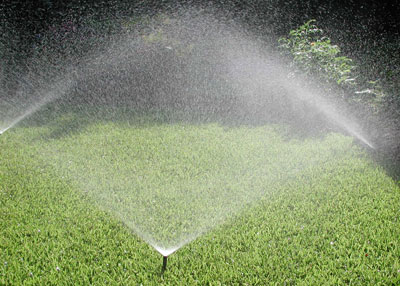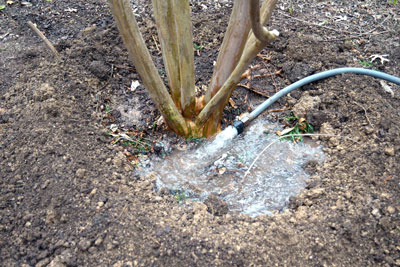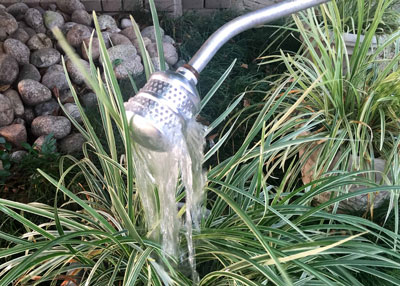Question of the Week: June 23, 2016
“Neil, how often should I water my plants?”
For most of my career I’ve told people that that’s the question that I can’t answer – that there is no one accurate answer. There are simply too many variables, including plant type and its health and vigor, soil type, temperature, wind, cloudy or sunny, humidity and recent rainfall among others.
But never letting facts get in my way, I’ll forge forward into the forest. Here are my rough guidelines to get you started. Mind you, you must be the final judge. You have 10 great moisture meters at the ends of your arms. Stick your finger into the soil. If it’s wet, you don’t water. If it’s dry, you do. But here are my suggestions anyway.
• Lawns and landscape plants. This is where we use the biggest percentage of water in summer, and we all need to conserve. Have a “smart controller” installed. It will monitor all those variables I listed, and it will decide how and when to run the sprinklers.

Whether you’re using pop-up sprinkler irrigation or hose-end sprinklers, water deeply, then wait until the soil dries to the touch before watering again.
In case you’re using hose-end sprinklers, water deeply enough that your lawn and landscape can go 4 or 5 days between waterings when temperatures are in the mid- to high 90s. Over 100, that may shift to every 3 or 4 days.
If you are using drip irrigation or if you have xeriphytic plants, those numbers may be way off. Again, make every effort to conserve water while still protecting the health of your landscape investment.
• New trees and shrubs. I water these by hand for their first couple of years. Sprinkler irrigation alone will simply not be adequate. Use soil you removed from the hole as you planted to construct a berm to retain water. Fill to the top of the berm. Let the water soak in, then soak it a second time.

Water breakers come in two different sizes. I prefer the larger size, but even this smaller one breaks the harsh flow of full volume so that soil isn’t washed away.
• Container plants. These plants have very limited soil reservoirs. I have probably 50 large potted plants along our drive and on our patio. I water them three or four times weekly, and I use water-soluble fertilizer at least once per week. Nutrients drain away quickly and must be replenished.
Water bubblers ought to be much more common. When used with long watering wands, they allow you to water hanging baskets, wall pots and all container gardens with the hose turned to full volume with absolutely no washing of soil from the containers.

Water bubbler with the faucet turned up to full volume.
